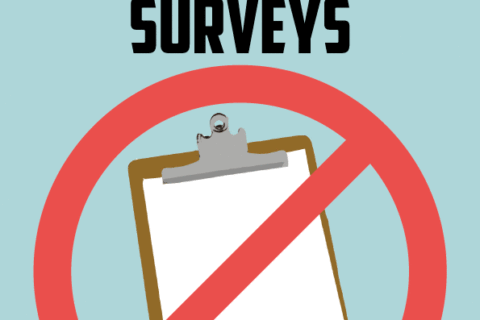In November 2011, I spoke at the Family Kids and Youth conference in London on using gamification in research. As many readers will know, gamification and playing games is nothing new- but until recently it was unheard of as potential tool to use in research until I, and a few of my industry peers began talking about it at conferences and writing for online publications.
 The market research industry is something that I am part of and proud of, although admittedly, it does need a bit of a makeover. Or facelift. I can only liken the market research industry to my dad (who is 66). Old, but with an interesting and colourful past and capable of so much more, if only he could keep up with the times. (I think it’s worth noting here that Tom Selleck is not my dad.)
The market research industry is something that I am part of and proud of, although admittedly, it does need a bit of a makeover. Or facelift. I can only liken the market research industry to my dad (who is 66). Old, but with an interesting and colourful past and capable of so much more, if only he could keep up with the times. (I think it’s worth noting here that Tom Selleck is not my dad.)
I think that image is the perfect human representation I could find of the market research industry today! Appealing, perhaps even a little bit sexy at times, but certainly there are other, more modern options out there that people that are willing to take.
The problem with market research…
Despite all of the wonderful things this industry does, we have a big problem; traditional online surveys are incredibly boring. It seems that while the rest of the web moved on, online surveys stayed stubbornly back in the 90’s with only a format Internet Explorer could love. We’ve tried to spruce the things up with some ‘flash-tool elements’ (flash based components embedded in the survey which include smiley faces becoming sad faces to illustrate satisfaction or dissatisfaction or perhaps a moveable scale) but this hasn’t helped engagement.
Boring surveys and surveys where there is no real feeling of achievement for taking part has led to:
- More companies going back to face-to-face research (which is more expensive)
- Higher drop-out rates
- Lower response rates (also leading to higher costs)
- And generally, we’re giving ourselves a pretty poor reputation to all the people who have ever taken the time to participate in online studies.
My concern is not just that we’re boring the life out of our loyal respondents (who were once excited about the idea of helping shape the world through their feedback) but that we’re also seriously putting-off the next generation of respondents and jeopardising the future of online surveys.
So, as a response to all this, I left my old job to start Research Through Gaming and hopefully, get people in my industry to think seriously about using gamification in research and also, a lot of creativity too (with any luck!).
This is why I carry out gamification workshops and conferences, as I want the entire industry, its clients and respondents to have a better experience with research, and not just keep it to myself within the walls of Research Through Gaming.
My thinking is this: If one respondent has a thoroughly enjoyable experience taking part in research then it’s likely that this experience will spread by word of mouth and get more people taking part in surveys for the betterment of the market research industry at large and in the future.
What Research Through Gaming did next
 In research it’s well known that young children, especially boys, are notoriously hard to speak to, so when our client approached us after the Family Kids and Youth conference and wanted to do a study speaking to 7-10 year olds, I was prepared for this project to take quite a while in field.
In research it’s well known that young children, especially boys, are notoriously hard to speak to, so when our client approached us after the Family Kids and Youth conference and wanted to do a study speaking to 7-10 year olds, I was prepared for this project to take quite a while in field.
Our client on this project was from the publishing side of a major TV and broadcasting organisation here in the UK. They wanted to speak to these children on their thoughts about their magazine content and advertising as well as other areas like; what the children do to have fun, what music they like and which celebrities are the most recognisable to them. The client chose to ‘rent out’ the Teens Room from our Playspondent Playhouse for this project. The Playspondent Playhouse is our virtual home with virtual rooms. With our gamification platform, all respondents are required to create an avatar and after they’ve created one, their avatar is then immersed in the virtual room.
![]() If the respondent created a male avatar, they’d be redirected into the stereotypically blue boys room with questions and stimulus targeted to them and the same for the girls, who would go into a stereotypically pink girls room. So essentially, we had made two research games for this client. Our client wanted to achieve 500 completed surveys from the 7-10 year olds in 2 weeks.
If the respondent created a male avatar, they’d be redirected into the stereotypically blue boys room with questions and stimulus targeted to them and the same for the girls, who would go into a stereotypically pink girls room. So essentially, we had made two research games for this client. Our client wanted to achieve 500 completed surveys from the 7-10 year olds in 2 weeks.
We had to think carefully about the huge difference between the reading and writing abilities of 7 year olds compared to the 10 year olds. We knew the game we made HAD to be easy to understand, easy to play and be fun to do without being too babyish for the 10 year olds but not too complex for the 7 year olds.
And so, ‘Magazine Question Hunt’ was born. The respondent would make their avatar, and be immersed in the Teens room with the goal of finding stars around the room (some hidden in drawers or cupboards) in order to get through to the bonus game of ‘Celebrity Challenge’ at the end. The respondents were given their regular incentives by the panel providers as well as the incentive of recognition and reward which was created for them through the game we made.
 What happened?
What happened?
I have to tell you, we were under quite a lot of pressure: the client had requested that we backward program the research game we made for them to IE8 (any programmers reading this will inhale at the thought with sympathy) as we make our games using HTML5 canvas which isn’t viewable on old browser versions. They felt that by not having the game playable on IE8, it would really affect their response rates. We found out eventually that they needn’t have worried and we needn’t have spent time trying to do this.
Also the project manager on the clients side was leaving for maternity leave any time soon so we had to get the 500 completed surveys before she left. On top of this, our graphics designer had an operation during this project and needed 2 weeks off, so all question graphics in the game were made by yours truly. So you can see, our humble team had our work cut out for us!
You’ll be pleased to hear, dear readers, that despite the pressures, we managed to achieve 700 completed surveys in half the allocated time – in just under 7 days! “Magazine Question Hunt” was a hit and we had so many positive comments about our game from the children afterwards. We had over 85% positive sentiment from the children when they were asked “What did you think of this game?” While it was lovely to see the words ‘awesome!’ and ‘loved it!!!!’ throughout our data files, it was also useful to see children really taking the time, even after the survey, to give us ideas on how to make the game even better in the future.
Now don’t get me wrong, this project wasn’t without its highs and its lows but we were still incredibly proud of what we had created.
Even after we removed some of the duplicated surveys (as some children loved it so much they came back to play again and again despite not being able to get the incentive twice from the panel provider) and removed the out-of-quota responses (all those surveys which were completed by children over 10 and younger than 7) we were still left with 545 completed surveys. The panel manager at Swapit Research (who specialise in research with children) said it was ‘miraculous’ and had gone on to say that he definitely felt that the game format was the key to keeping the children engaged, as the survey was typically a little longer than what the children would usually do.
This study, along with many more that I’m sure we’ll create in the future, is evidence that gamification has its firm place in the market research industry. I’ve seen from my comparative focus groups with adults that gamified research allows for better respondent engagement and I end up finding out so much more about the respondents as people, as consumers – and the same goes for the comparative focus groups I’ve run with children at my old primary (elementary) school here in London. In an online comparative study ‘How Far is Too Far’ by Bernie Malinoff and Jon Puleston, we’ve seen that gamified surveys have:
- An increase in answer time (people are really thinking about what they’re saying)
- A decrease in straight-lining (zooming through the survey just to get to the end which gives pretty bad data)
- An increase in fun (happy respondents will come back for more!).
So, to all those people who thought I was insane you may have been right. Taking the risk to leave the norms of a job to set out on your own is difficult for anyone to make, but to try and pioneer a new methodology of research is even more scary but at least now I know: gamification in research is here to stay!
 Betty Adamou is CEO and Founder – Research Through Gaming Ltd and runs the gamification blog GameAccess
Betty Adamou is CEO and Founder – Research Through Gaming Ltd and runs the gamification blog GameAccess



3 comments
I understood the whole thing but how did you get so many children to play the game and participate in the survey.
I enjoy, lead to I discovered just what I used to be having a look for.
You’ve ended my 4 day long hunt! God Bless you man. Have a great
day. Bye
As a marketing intern, a psychology major, and an overall research nerd, I think that this is the coolest thing ever.